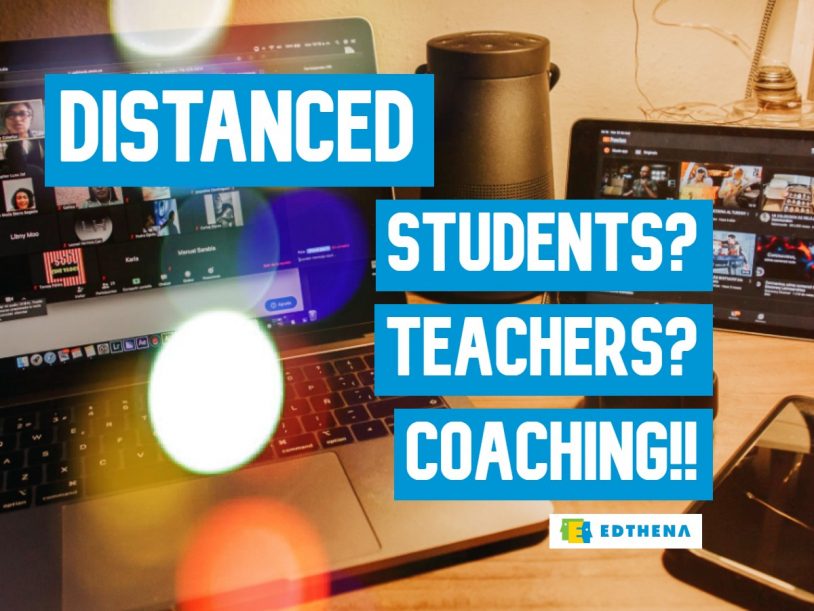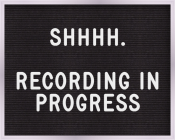Distanced Teaching? You Can Facilitate Virtual Coaching and Provide Targeted Feedback

Most first-year teachers can attest to the anxiety that comes during the first months in the classroom. The multi-tasking and flexible skills required wasn’t necessarily taught in college.
Nationwide, teachers are experiencing the first-days-of-school feelings right now as they work rapidly to develop distanced teaching support for their students.
Although there are certainly differences between virtual and in-classroom teaching, the essence of what makes an effective lesson and good instructional design remains the same. This means we don’t need to redefine “good lessons” and “good coaching” to facilitate feedback and professional learning right now. We only need to redefine what teacher and student success looks like in this new environment.
In good news, it might be easier than it ever has in the past to gather digital examples of digital teaching and digital learning for analysis.
Learn-from-Home “Teaching” is a Flexible and Rich Resource for Professional Learning
The particular type of distanced teaching your teachers implement will depend on your particular context. It’s possible to implement many different types of learn-from-home options that vary by age and access to resources:
- Synchronous online lessons delivered via video conferencing software
- Khan Academy-style flipped classroom lessons for students
- Recorded “how to teach” conceptual videos for parent
- Online office-hours for students and parents
- Conference-call discussions with individual or groups of students
The big idea here is to use the artifacts of virtual teaching the same way we already use videos of classroom teaching. In all of these scenarios, the recordings can be easily uploaded to Edthena for analysis and reflection. (Yes, it’s possible to upload an audio file and use our video tools to analyze it.)
Make a Plan to Capture Distance Learning and Virtual Teaching

No matter the type of learning you teachers are facilitating right now, it likely involves some sort of digital aspect. Teach teachers how to capture these digital artifacts!
- Packet-based learning with teacher-created explanation videos? Save the video.
- Video-conference class meetings? Record the sessions.
- Student-led discussions via teleconference? Capture the audio.
Each of these styles of facilitation are still examples of teaching and learning happening in this new version of school that is work-from-home for teacher and learn-from-home for students.
The good news is that the tools that teachers are using to facilitate the learning often include mechanisms to record. Popular video conferencing software like Zoom, GoToMeeting, WebEx, and Google Meet include features to record the sessions. Phone conference tools often have ways to record, too.
Other helpful resources that can be used for recording flipped classroom videos are screen-capture software such as RecordRTC. This allows you to record your screen, camera, mic, and speaker activity from your browser.
Use Edthena for Remote Feedback on Teaching Videos
Once you record a flipped classroom or distance learning video, you can use Edthena as the reflection tool. When a video is uploaded to the platform, the teacher can share the video with a group.
Groups are flexible and can be a collaboration or a grade-level team, content-team, or even an instructional coach. The teachers can self-reflect, and colleagues can also leave comments at specific moments in time.
The reflection process doesn’t stop at comments. Any comment can be turned into next-step teacher goals. This is helpful for ensuring that the reflection process is more than just “getting feedback” and focused on making adjustments and changes.
Virtual Video Coaching is Similar to In-Classroom Coaching
Decades of research supports the idea of using videos of classroom teaching to drive educator learning. Using the videos of virtual teaching to support a video coaching process is the logical progression for our current situation.
Instructional strategies that coaches look for during in-classroom teaching videos are likely to mirror the strategies they want to see within distanced teaching. To help ensure that colleagues and coaches know what’s important right now, explicitly define what’s important for instruction right now by re-articulating any previously decided priorities alongside the new ones.
Priorities from an in-person instructional coaching model can translate to online coaching:
- Facilitating checks for understanding? Still happens in synchronous video teaching
- Implementing procedures and routines? Muting those microphones is a good example
- Promoting social emotional learning? Making a positive home learning environment is SEL on steriods
It’s possible to provide feedback about all of these instructional priorities using the Edthena platform. Teachers can respond to this feedback inside of Edthena, and together, coaches and teachers can collaborate on the actionable next steps. As learning starts to scale, it’s possible to organize coaching cycles of learning and feedback inside Edthena, too.
If you’re looking for more ways to facilitate learning with video artifacts, check out “Use these Powerful Video Focusing Techniques to Accelerate Teacher Learning, Encourage Deep Reflection, and Facilitate Rich Discussions.” If you’re ready to dig into more of the how-to for video, check out this interview from Education Talk Radio with “Evidence of Practice” author Adam Geller.
